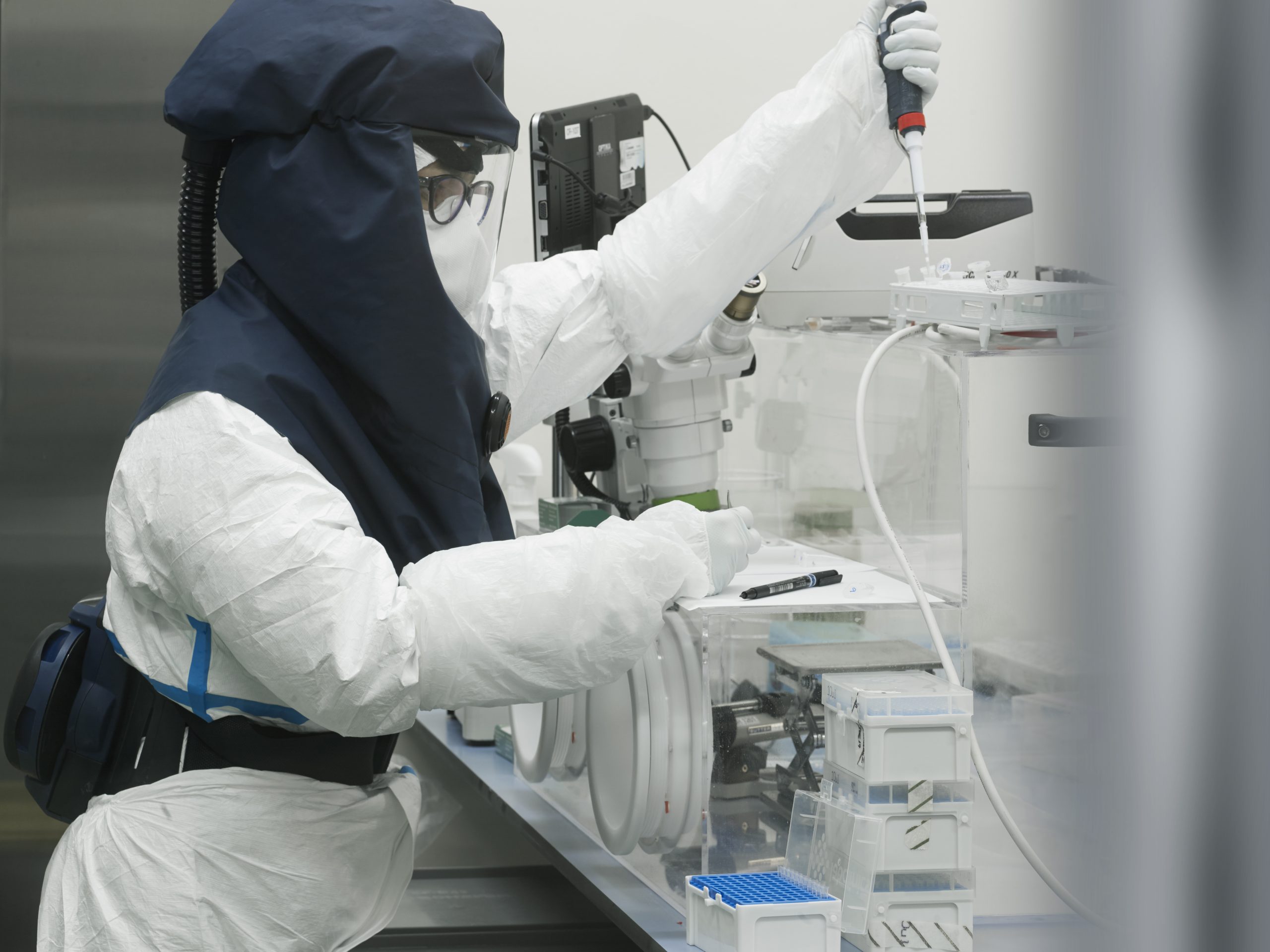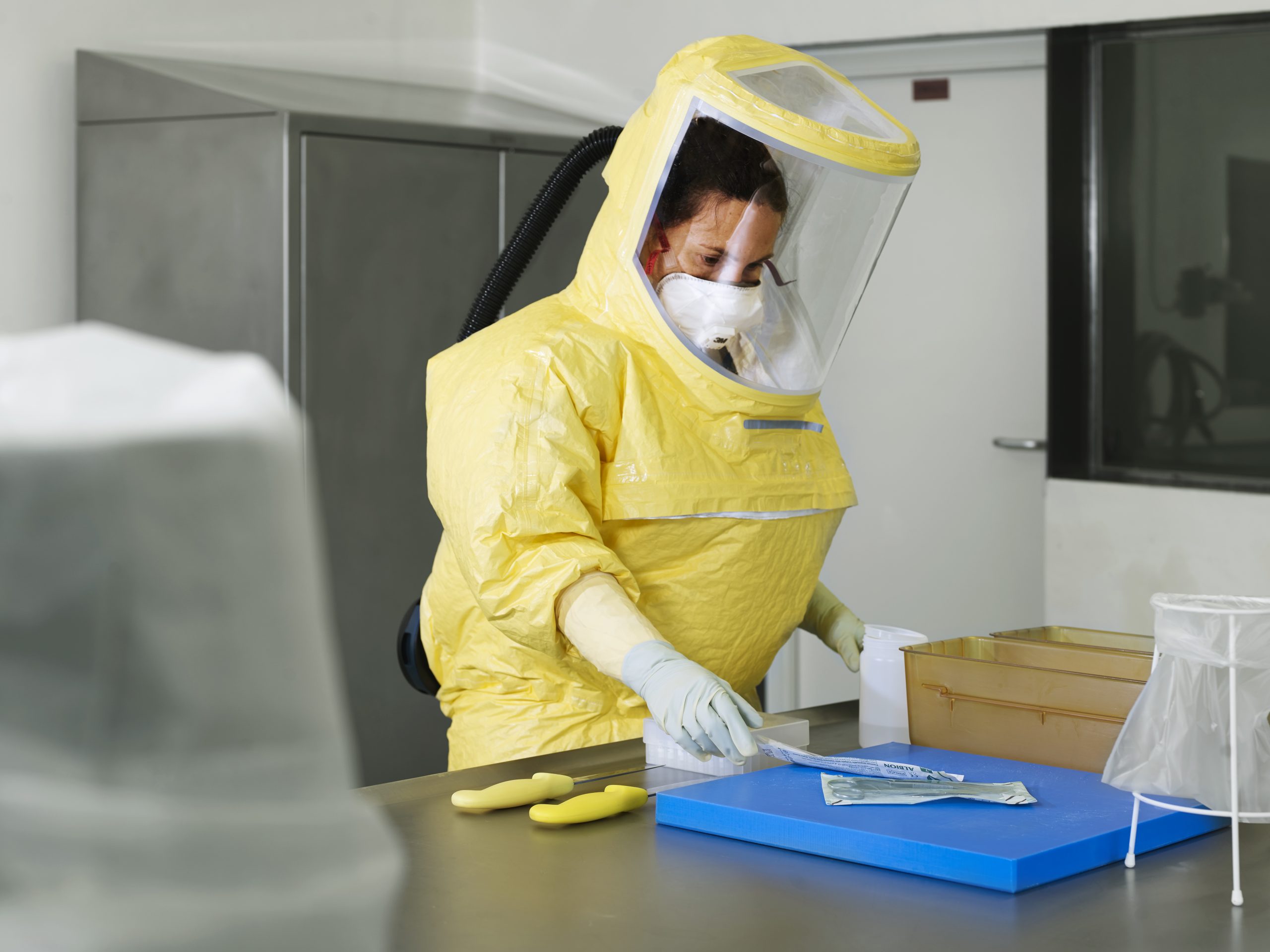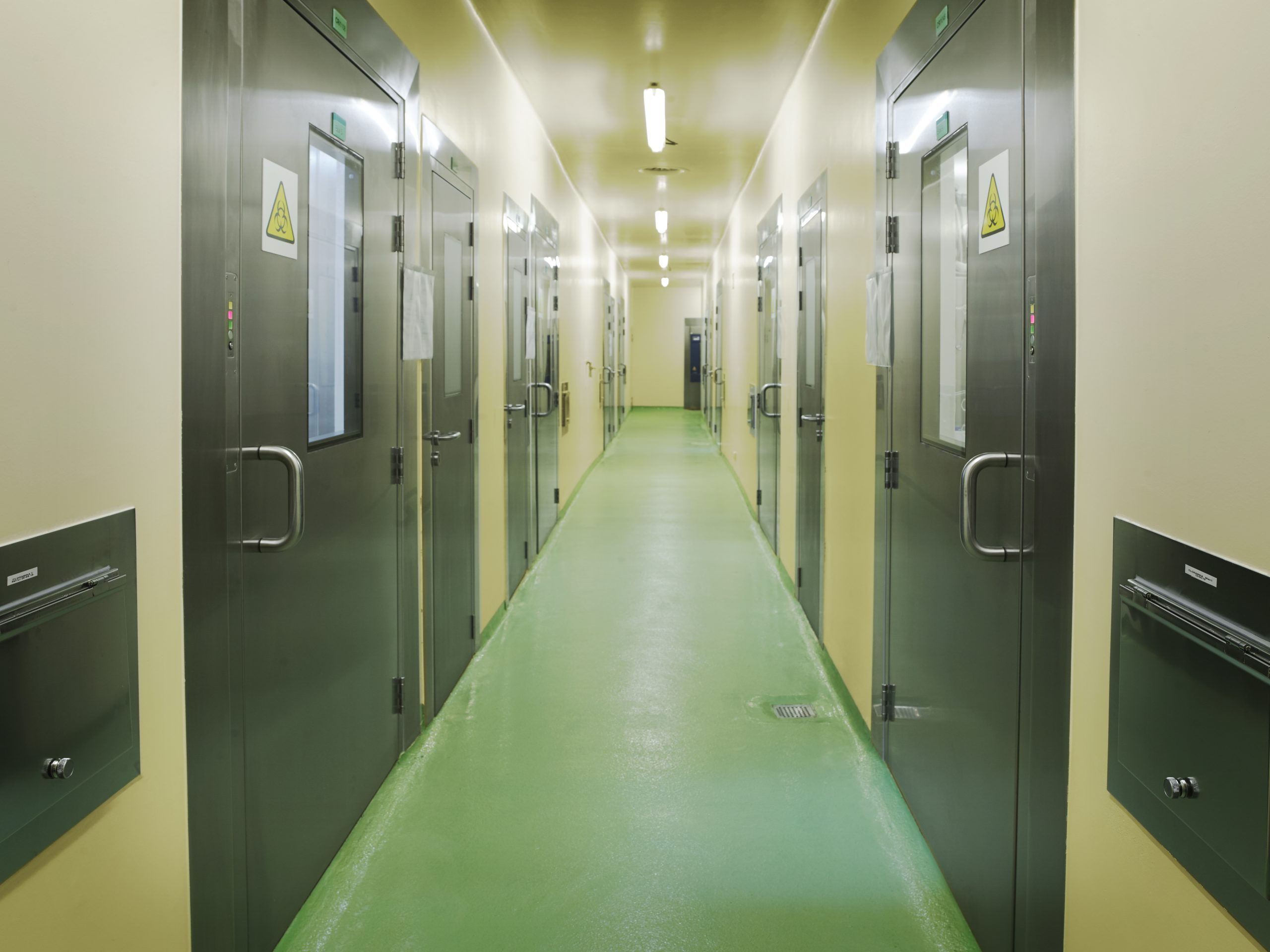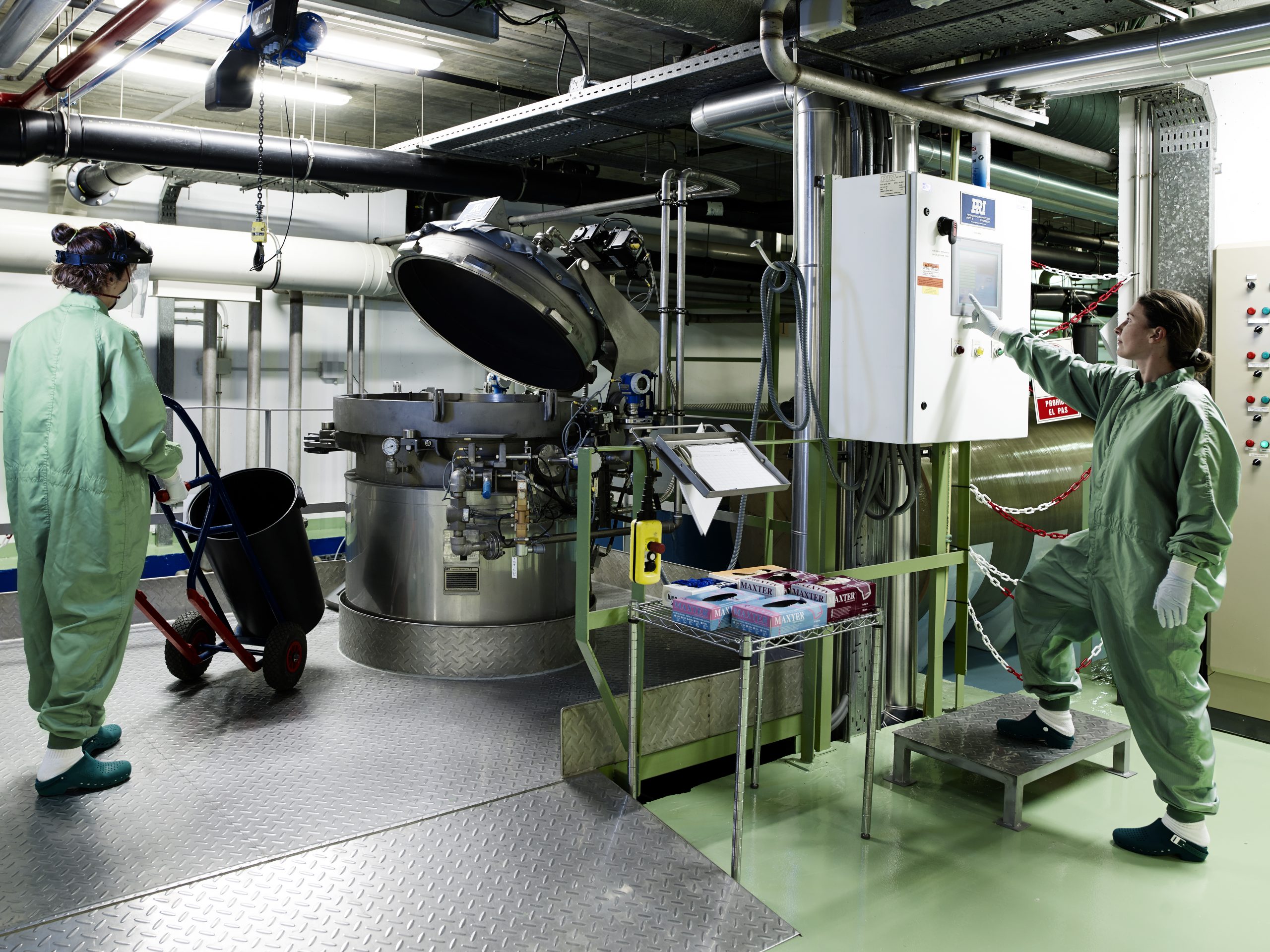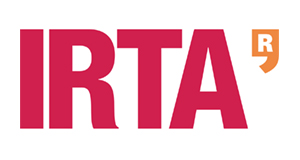
High Biocontainment Unit – Centre de Recerca en Sanitat Animal
GINYS-IRTA-002
Xavier Abad
Cap de la Unitat d’Alta Biocontenció i Laboratoris NBS2 de l’IRTA-CReSA
IRTA CReSA
CReSA Building. Campus UAB. 08193 Bellaterra
Tel. 93. 467 40 40 (Ext. 1708)
The High Biocontainment Unit facilities at IRTA-CReSA are suitable for working with pathogens of hazard group 3 (according to RD 664/97) and a wide range of animal models (from mice to ruminants, but also all kind of birds). IRTA-CReSA offers the possibility of using both laboratory and animal facilities to perform studies (in a 1500 m2 working area inside a facility accounting with 4500 m2).
- Technologically advanced facilities to carry out studies with pathogenic agents that require High Biocontainment (also labeled as Animal Biosafety Level 3 (ABSL3) o Biosafety Level 3 Agriculture (BSL3-Ag) measures for their handling.
- Secure management of high-hazardous infectious agents including airtight isolation systems, negative pressure gradients, absolute air filtration and treatment of all generated liquid and solid wastes.
- The ABSL3 facility comprises working spaces dedicated to laboratories and animal facilities to work with small and large animals.
- Experiments are performed following strict ethical and biosafety regulations, providing as much care and animal welfare as possible.
The High Biocontainment Unit at IRTA-CReSA is one of the two nodes of the ICTS High Biosafety Laboratory Network (RLASB).
Services
In
this link you will find the IRTA-CReSA’s services portfolio.
this link you will find the IRTA-CReSA’s services portfolio.
Equipment
High Biocontainment Unit (4,500 m²): laboratories in High Biocontainment and 13 independent experimental boxes suitable for housing farm animals (pigs, poultry, cattle, sheep, goats, and rabbits), as well as wild animals (goats, birds of prey, deer,chamois, alpacas, llamas, dromedaries, etc.) and laboratory animals (rats, mice, hamsters, etc.). It also includes an insectarium which allows to work with autochthonous but also exotic species.
Staff
Natàlia Majó | natalia.majo@irta.cat
| 934674040 | ORCID
Xavier Abad | xavier.abad@irta.cat
| 934674040 | ORCID
Projects
Title:
BROILERNET: Xarxa d’Innovació en pràctica i ciència en producció en avícola
Reference:
https://broilernet.eu
Funding Organism:
EU
Status:
Executing
Title:
COLIBIO: Desxifrant les interaccions Campylobacter coli-hoste per al desenvolupament d'eines eficaces de control en avicultura
Funding Organism:
MICINN
Status:
Executing
Title:
DECIDE (Fase2) Control i priorització de malalties animals contagioses no regulades per la UE
Reference:
https://decideproject.eu
Funding Organism:
UE
Status:
Select
Title:
EPIVINF (Fase 2) Regulació epigenètica de factors hostes en infeccions víriques
Funding Organism:
UE
Status:
Executing
Title:
FAECAL-PHAGE: El trasplantament de la microbiota fecal com a alternativa als antimicrobians per a la prevenció de malalties entèriques causades per Escherichia coli i Salmonella en porcí
Funding Organism:
MICINN
Status:
Executing
Title:
FARMBANK: Granja in vitro: desenvolupament del primer biobanc de organoides d'animals de granja com a alternativa als experiments amb animals en la recerca de malalties infeccions
Funding Organism:
MICINN
Status:
Executing
Title:
ISIDORe: Serveis integrats per a la investigació de brots de malalties infeccioses
Reference:
https://isidore-project.eu
Funding Organism:
UE
Status:
Executing
Title:
OFFPol: Desenvolupament d'un test ràpid de pronòstic i diagnòstic de la poliserositis porcina per a ser realitzat en granja
Funding Organism:
MICINN
Status:
Executing
Title:
ZooPrion: Desenvolupament de models innovadors de malalties priòniques i estudi de la patobiologia de prions sintètics en ratolins transgènics y hostes poc comuns.
Funding Organism:
MICINN
Status:
Executing
Title:
EpiWestNileMosq - Determinació del paper de mosquits vectors i altres factors en la transmissió del virus del Nil Occidental
Funding Organism:
MICINN
Status:
Executing
Title:
INFLUOMA - Investigant els mecanismes moleculars de l'evolució de la infecció amb virus d'influença aviària en les aus mitjançant una aproximació multi-òmica
Funding Organism:
MICINN
Status:
Executing
Title:
Plataforma in vitro lab NBS3 CReSA - Plataforma per a la monitorització in vitro, in vivo i ex vivo d'infeccions en alta biocontención (NBS3)
Funding Organism:
MICINN
Status:
Executing
Title:
Desxiframent infecció severa del SARS-CoV-2 - Desxiframent del paper de la resposta humoral en el desenvolupament de la infecció severa del SARS-CoV-2 durant la infecció natural i després de la vacunació
Funding Organism:
Fundació La Marató
Status:
Executing
Title:
PORCOPROTECT: Resposta immunitària innata enfront de coronavirus porcins entèrics. Modulació de la resposta d'interferó de tipus III per a la millora de la protecció a nivell mucosal.
Funding Organism:
MICINN
Status:
Executing
Publications
Immunogenicity and Protection against Mycobacterium caprae Challenge in Goats Vaccinated with BCG and Revaccinated after One Year
Vaccines, 8(4), 16, Article 751. (2020)
Vaccines, 8(4), 16, Article 751. (2020)
Strategies for Feeding Unweaned Dairy Beef Cattle to Improve Their Health
Animals, 10(10), 20, Article 1908 (2020)
Animals, 10(10), 20, Article 1908 (2020)
Assessing the role of livestock and sympatric wild ruminants in spreading antimicrobial resistant Campylobacter and Salmonella in alpine ecosystems
BMC Vet Res 17, 79 (2021)
BMC Vet Res 17, 79 (2021)
Chicken liver is a potential reservoir of bacteriophages and phage-derived particles containing antibiotic resistance genes
Microbial Biotechnology(2022)15(9), 2464–2475 (April 2022)
Microbial Biotechnology(2022)15(9), 2464–2475 (April 2022)
West Nile Virus Lineage 2 Spreads Westwards in Europe and Overwinters in North-Eastern Spain (2017–2020)
Viruses 2022, 14, 569 (March 2022)
Viruses 2022, 14, 569 (March 2022)
Hotspot of Crimean-Congo Hemorrhagic Fever Virus Seropositivity in Wildlife, Northeastern Spain
Emerging Infectious Diseases. 2021;27(9):2480-2484 (September 2021)
Emerging Infectious Diseases. 2021;27(9):2480-2484 (September 2021)
The FlagT4G Vaccine Confers a Strong and Regulated Immunity and Early Virological Protection against Classical Swine Fever
Viruses 2022, 14, 1954 (September 2022)
Viruses 2022, 14, 1954 (September 2022)
Clearance and persistence of Escherichia coli in the freshwater mussel Unio mancus
Scientific reports (Nature Publishing Group), Vol. 12 (july 2022)
Scientific reports (Nature Publishing Group), Vol. 12 (july 2022)
Evolution of Swine Influenza Virus H3N2 in Vaccinated and Nonvaccinated Pigs after Previous Natural H1N1 Infection
Viruses, Vol. 14 (september 2022)
Viruses, Vol. 14 (september 2022)
Rapid SARS-CoV-2 Inactivation in a Simulated Hospital Room Using a Mobile and Autonomous Robot Emitting Ultraviolet-C Light
The Journal of Infectious Diseases, Vol. 225 (november 2021)
The Journal of Infectious Diseases, Vol. 225 (november 2021)
Piglet innate immune response to Streptococcus suis colonization is modulated by the virulence of the strain
Veterinary research, Vol. 52 (december 2021)
Veterinary research, Vol. 52 (december 2021)
Immune Responses to Pandemic H1N1 Influenza Virus Infection in Pigs Vaccinated with a Conserved Hemagglutinin HA1 Peptide Adjuvanted with CAF ® 01 or CDA
Vaccines, Vol. 9 (july 2021)
Vaccines, Vol. 9 (july 2021)
Cross-protection against African swine fever virus upon intranasal vaccination is associated with an adaptive-innate immune crosstalk
PLoS pathogens, Vol. 18 (november 2022)
PLoS pathogens, Vol. 18 (november 2022)
Agreement and differential use of laboratory methods for the detection and quantification of SARS-CoV-2 in experimentally infected animals
Frontiers in microbiology, Vol. 13 (november 2022)
Frontiers in microbiology, Vol. 13 (november 2022)
Dual Host and Pathogen RNA-Seq Analysis Unravels Chicken Genes Potentially Involved in Resistance to Highly Pathogenic Avian Influenza Virus Infection
Frontiers in immunology, Vol. 13 (may 2022)
Frontiers in immunology, Vol. 13 (may 2022)
A novel optical sensor system for the automatic classification of mosquitoes by genus and sex with high levels of accuracy
Parasites & vectors, Vol. 15 (june 2022)
Parasites & vectors, Vol. 15 (june 2022)
Potential of Oral Nanoparticles Containing Cytokines as Intestinal Mucosal Immunostimulants in Pigs: A Pilot Study
Animals, Vol. 12 (april 2022)
Animals, Vol. 12 (april 2022)
Widespread Circulation of Flaviviruses in Horses and Birds in Northeastern Spain (Catalonia) between 2010 and 2019
Viruses, Vol. 13 (november 2021)
Viruses, Vol. 13 (november 2021)
A proof-of-concept study to investgate the efficacy of heat-inactvated autovaccines in Mycobacterium caprae experimentally challenged goats
Scientfic reports (Nature Publishing Group), Vol. 12 (december 2022)
Scientfic reports (Nature Publishing Group), Vol. 12 (december 2022)
Bona fide atypical scrapie faithfully reproduced for the first time in a rodent model
Acta neuropathologica communications, Vol. 10 (december 2022)
Acta neuropathologica communications, Vol. 10 (december 2022)
Review on the methodology to assess respiratory tract lesions in pigs and their production impact
Veterinary research, Vol. 54 (february 2023)
Veterinary research, Vol. 54 (february 2023)



